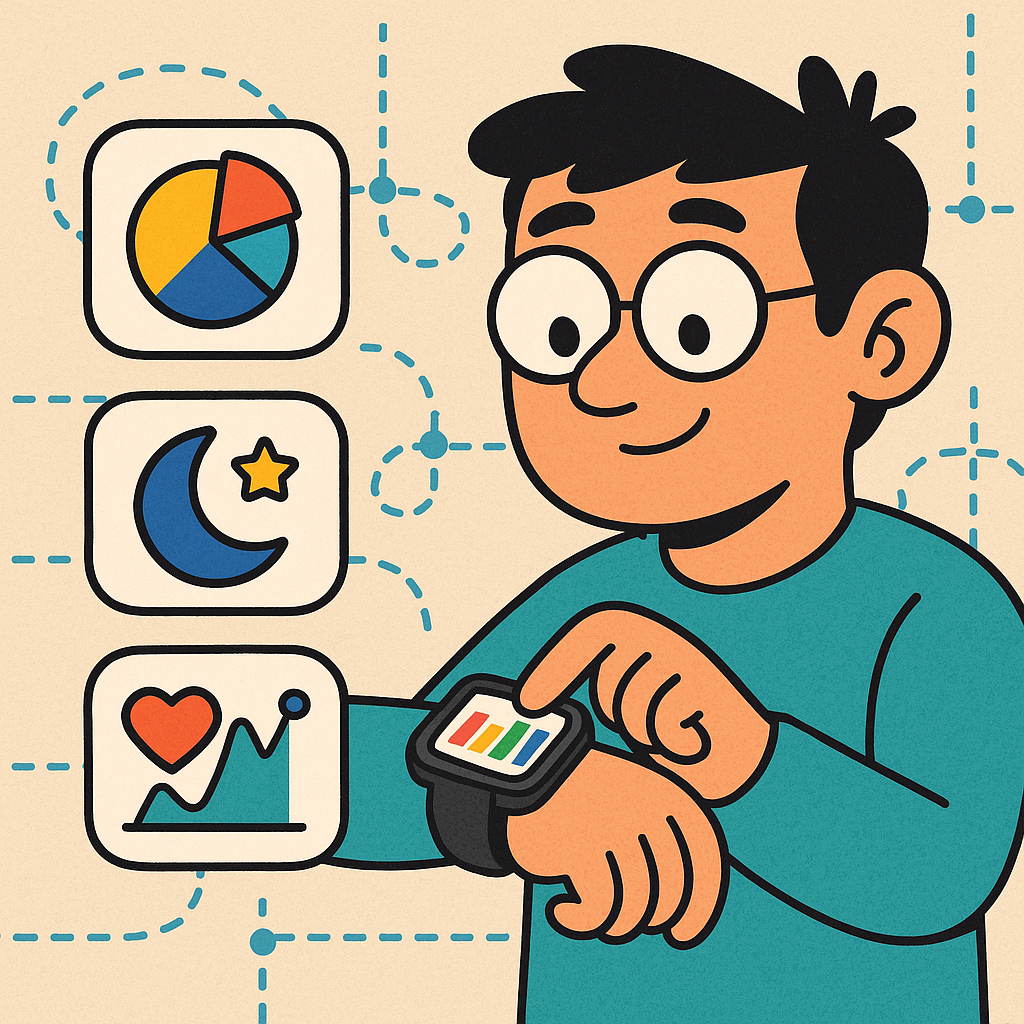Personal analytics are becoming part of everyday life. From tracking sleep and steps to budgeting and screen time, people want insights about themselves. However, many are uneasy about feeling constantly monitored. Fortunately, it is possible to use personal analytics without feeling tracked—if you make deliberate choices and use the right tools.

Why Personal Analytics Can Feel Intrusive
Some systems turn helpful tracking into uncomfortable surveillance. This happens for several reasons:
- Many tools process data on remote servers instead of locally.
- Companies often combine your data across devices to build detailed profiles.
- Some providers share your data with advertisers or third parties, often without clear consent.
These practices can leave users feeling exposed, even when they seek to gain insights about their own habits. Therefore, taking control of how analytics are used becomes essential.
Simple Ways to Use Personal Analytics Without Feeling Tracked
You don’t need to give up analytics to stay private. Here’s how to do it better.
1. Choose Tools That Respect Your Privacy
Start by using software that avoids tracking by design:
- Look for tools that store data on your device instead of sending it to the cloud.
- Use services like Plausible or Fathom that offer anonymous, cookie-free analytics (Usercentrics, 2025).
- Opt for apps that use differential privacy, like Apple’s analytics system, which adds random “noise” to data before sending it (Apple, 2025).
These features allow you to keep insights while minimizing exposure.
2. Use Privacy-First Design Settings
Many tools offer settings that can help you take back control:
- Turn off unnecessary permissions.
- Disable automatic syncing unless you absolutely need it.
- Regularly review what’s being collected and why.
For instance, if you only care about your sleep trends, you probably don’t need continuous heart-rate tracking or location history.
3. Track Less to Gain More
It may seem counterintuitive, but tracking less data often makes analytics more useful. Focus on a few meaningful metrics rather than everything at once. For example:
- Track your budget once a week instead of every transaction.
- Log workouts instead of full-body metrics every hour.
By narrowing the scope, you reduce noise—and risk—while getting clearer insights.
4. Process Data Locally When Possible
One major concern in personal analytics is where data is analyzed. Fortunately, new methods help keep your data private:
- Local-first apps keep everything on your device.
- Federated learning allows companies to improve services without accessing your data directly.
- Homomorphic encryption lets systems compute on encrypted data—without ever decrypting it (Gartner, 2025).
When your data never leaves your hands, you maintain control.
5. Understand and Use Your Privacy Rights
In many places, you now have legal rights over how your data is used:
- The GDPR (Europe) and CCPA (California) require companies to disclose their data practices.
- Many U.S. states, including Maryland and California, now require companies to follow privacy-by-design rules (Oakland Privacy Forum, 2025).
Use these rights to:
- Opt out of analytics when offered.
- Request deletion of your stored data.
- Choose services that comply with privacy regulations.
When you exercise these rights, you reinforce your digital boundaries.
What the Future Holds for Ethical Analytics
Several trends show promise in making personal analytics safer and more transparent.
Privacy-Enhancing Technology (PET) Will Be the Norm
According to a Gartner report, over 60% of large firms will adopt PETs such as secure multiparty computation or federated learning by 2025 (Gartner, 2025). These technologies allow companies to provide insights without compromising your data.
AI Will Focus on Ethical Data Use
AI-driven analytics tools are beginning to embed ethical decision-making directly into their code. For example, some systems now limit what data they can access or ensure it is never stored. These developments mean users can get smarter insights while still protecting their privacy (arXiv, 2024).
Laws Will Continue to Get Stricter
As public awareness grows, so does pressure on lawmakers. More U.S. states are adding regulations modeled after Europe’s GDPR. As a result, expect more opt-in models, clearer data policies, and better control for users.
Practical Checklist for Privacy-Conscious Analytics Users
Use the following checklist to assess whether your tools respect your privacy:
| ✔ | Step |
|---|---|
| ✅ | Check if the app stores data locally. |
| ✅ | Look for clear privacy settings or opt-out options. |
| ✅ | Limit tracking to just the most useful metrics. |
| ✅ | Avoid tools that share your data with third parties. |
| ✅ | Regularly audit what is collected and why. |
| ✅ | Stay informed about your regional data rights. |
By following these steps, you’ll enjoy the benefits of personal analytics without giving up your privacy.
Final Thoughts
Personal analytics can offer meaningful self-insights—but only when they serve you, not third-party interests. The good news is you don’t have to feel watched to gain clarity about your habits, health, or productivity.
Use private tools. Set boundaries. Audit regularly. And remember, the goal of analytics should always be to help you—not to sell you.
References
Pew Research Center. Americans and Privacy: Concerned, Confused and Feeling Lack of Control over Their Personal Information. Pew Research Center. 2019. https://www.pewresearch.org (2019)
MyHRFuture. The Importance of Data Ethics and Privacy in People Analytics. MyHRFuture. 2018. https://www.myhrfuture.com (2018)
Matomo Blog. Privacy-friendly analytics: The benefits of an ethical, GDPR-compliant analytics approach. Matomo. 2025. https://matomo.org (2025)






